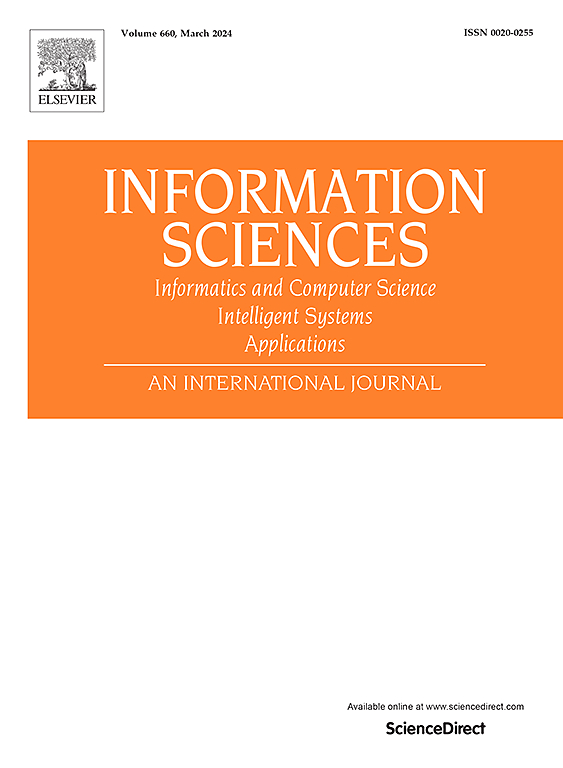面向知识图表示学习的增强异构石墨烯设计
IF 6.8
1区 计算机科学
0 COMPUTER SCIENCE, INFORMATION SYSTEMS
引用次数: 0
摘要
知识图(Knowledge graphs, KGs)是主流工业场景中表示和集成大量结构和语义信息的实用工具。尽管具有潜力,但KGs的异质性和复杂性构成了一个巨大的障碍,特别是对于图表示学习。大多数现有的KG嵌入模型忽略了动态高阶连接模式以获得对异构网络的洞察,并且严重依赖手工制作的模式来处理复杂的语义关系,这限制了它们自适应捕获不同任务中KG的细微和复杂关系的能力。为了填补这一空白,我们提出了增强异构石墨烯设计(ReHGD) -一个为kg设计的模型,该模型通过合作多智能体强化学习算法关注类型石墨烯(异构链和基序)的自适应设计。这种任务驱动的方法可以学习针对特定下游任务定制的判别图表示。具体来说,ReHGD通过两个阶段的过程参与类型化石墨的创建:它(1)建立一个增强的链设计模块来生成没有预定义规则的链,(2)采用缓冲感知抽样技术从先前的经验中获得情景链。在此基础上,对基于情景链的子图进行了通勤计数和Hadamard积运算,推导出了子图的基序。在学习图表示的最后一步,ReHGD进行链和基序聚合。实验结果和分析表明,ReHGD在三个真实世界的图形数据和实际任务上优于强基线。本文章由计算机程序翻译,如有差异,请以英文原文为准。
Reinforced Heterogeneous Graphlet Design for Knowledge Graph Representation Learning
Knowledge graphs (KGs) are practical tools that represent and integrate plentiful structural and semantic information in mainstream industrial scenarios. Despite their potential, the heterogeneity and complexity of KGs pose a formidable obstacle, especially for graph representation learning. Most existing KG embedding models omit dynamic high-order connectivity patterns to gain insights into heterogeneous networks and heavily rely on handcrafted patterns to handle complex semantic relationships, which limits their capability to adaptively capture the nuanced and intricate relationships of KGs in different tasks. To fill this gap, we present Reinforced Heterogeneous Graphlet Design (ReHGD)—a model designed for KGs that focuses on the adaptive design of typed graphlets (heterogeneous chains and motifs) through a cooperative multi-agent reinforcement learning algorithm. This task-driven approach can learn discriminative graph representations tailored to specific downstream tasks. Specifically, ReHGD engages in the creation of typed graphlets through a two-stage process: it (1) establishes a reinforced chain design module to generate chains without predefined rules and (2) employs a buffer-aware sampling technique to derive episodic chains from prior experiences. Subsequently, motifs are deduced through the application of commute count and Hadamard product operations to the episodic chain-based subgraphs. In the final step toward learning graph representations, ReHGD undertakes chain and motif aggregations. Experimental results and analyses reveal that ReHGD outperforms strong baselines on three real-world graph data and practical tasks.
求助全文
通过发布文献求助,成功后即可免费获取论文全文。
去求助
来源期刊

Information Sciences
工程技术-计算机:信息系统
CiteScore
14.00
自引率
17.30%
发文量
1322
审稿时长
10.4 months
期刊介绍:
Informatics and Computer Science Intelligent Systems Applications is an esteemed international journal that focuses on publishing original and creative research findings in the field of information sciences. We also feature a limited number of timely tutorial and surveying contributions.
Our journal aims to cater to a diverse audience, including researchers, developers, managers, strategic planners, graduate students, and anyone interested in staying up-to-date with cutting-edge research in information science, knowledge engineering, and intelligent systems. While readers are expected to share a common interest in information science, they come from varying backgrounds such as engineering, mathematics, statistics, physics, computer science, cell biology, molecular biology, management science, cognitive science, neurobiology, behavioral sciences, and biochemistry.
 求助内容:
求助内容: 应助结果提醒方式:
应助结果提醒方式:


